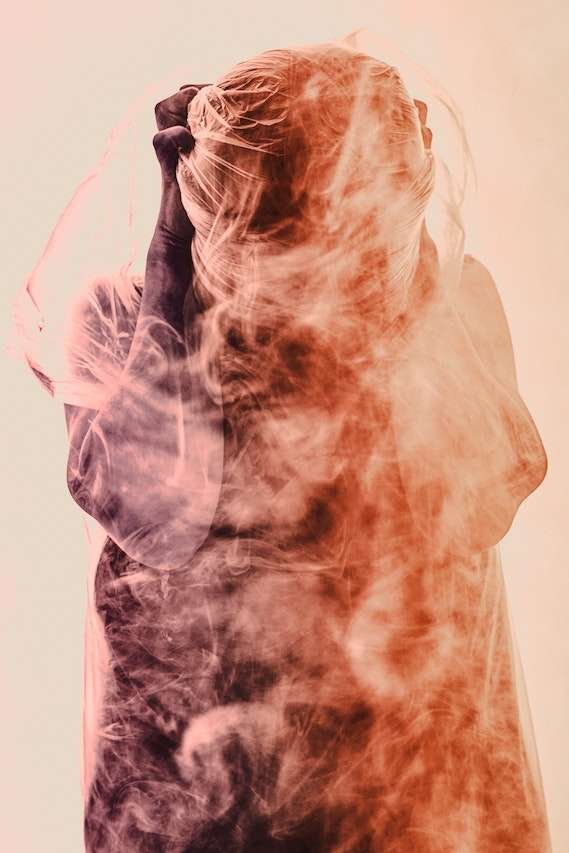
Mentally Unbalanced Person
No matter how strange it is, every day you have a high probability of meeting a mentally unbalanced person. Moreover, the bad news is that it is not easy to distinguish such “special” people from ordinary people. In most cases, the word “crazy” evokes in each of us an image of an aggressive person with a blank look, but sometimes these signs do not show in real life.
Doctors, psychiatrists, and various other specialists have identified the following symptoms that help distinguish patients from the average person:
- In a conversation, mentally healthy people pay attention to verbs, and nouns for one simple reason – they carry the meaning of each sentence. Psychologists provide a pretext to explain their own actions. Remember that according to statistics, they often use “for”, and “to”.
- Such dangerous people are dominated by worldly desires. They go out to fulfil their personal physical needs.
- In most cases, a mentally unbalanced person lives only for himself, however, it is worth adding to this characteristic that they prefer to live alone and focus on others to satisfy their desires.
- They have low emotional backgrounds, that is, such people are emotionless, very careless and hypocritical.
- In a conversation with such a person, you will feel that she knows everything about you, and you know nothing about her. In addition, psychics often share what they like with their interlocutors. Cleverly disrupt the conversation. As a result, you won’t remember how it all started. It will be favourable if you finally realize that someone else’s worldview inspired you. Moreover, you accepted him for a while and fully shared every idea of such a person.
Behavioural characteristics of mental patients.
The legal criterion of insanity refers to the inability of a mentally ill person to be aware of his actions (inaction) and to lose the ability to manage them. B.V. Shostakovich and V.V. Gorinov (1996) include those that significantly reduce the completeness of the mind’s reflection of objective and subjective reality, worsen, distort its perception, and reduce the freedom of personal choice and self-control, this makes the problem difficult to solve, circumstances. Many of the significant mental disorders in law enforcement practice during the acute phase may correspond to these signs. Accordingly, disharmony manifests itself in the mental processes of appearance patients, the nature of their thinking and speech, emotions and behaviour, and criticality or non-criticality to the current living conditions, including criminals.
A common feature is the low competitiveness of the patient in the labour market for patients with mental disorders. Apparently, among all patients on the psychiatric records of the Grodno region dispensary, 85.7% are disabled, and only 5.0% are disabled in the 3rd group.
Mental disorders are diseases with a high risk of disability, which determines the social and economic importance of the direction of rehabilitation in psychiatry.
The average per capita consumption of alcoholic beverages in the Republic of Belarus in 2012 was 12.6 litres of absolute alcohol per capita, including children less than 15 years of age.
Many of us associate strange and absurd behaviour, incorrect and incomprehensible reasoning, unexpected actions that do not correspond to the circumstances, pronounced excitement and aggressive actions with the idea of a mental patient. These characteristics, which are indeed characteristic of some patients, are not, however, mandatory and the significant variety of manifestations of mental disorders is not exhausted.
From the point of view of the practical importance of the forensic characteristics of people prone to OOD, it is desirable to isolate the following aspects of its structure:

- Specific outward behavioural signs;
- Personality traits of people with mental disorders;
- Characteristics of the crime: circumstances of commission, characteristics of the method of committing OOD; Property of particles placed at the crime scene by persons of this category; Characteristics of the direct subject of criminal aggression.
Knowledge of these signs, based on information received from eyewitnesses and testimony of witnesses, allows the active worker, the investigator, to come up with reasonable versions of the commission of OOD by people with mental anomalies.
External behavioural signs are understood as a set of signs about a person’s appearance and clothes, and speech qualities. Emotional signals are expressed in individual typological characteristics. So, a schizophrenic or depressed patient may be lethargic, an epileptic may have signs of physiological activity on his clothes, may be contaminated, and may have dried blood marks from biting their tongue at the corner of his mouth. Attack, there are traces of skin damage in a person with TBI surgical interventions. In the dementia stage of senile atrophic processes of schizophrenia, epilepsy, and GM, there are external signs of a decrease in intelligence, a senseless appearance and a lack of purposeful behaviour, which often does not correspond to the real situation
For mentally abnormal people prone to OOD, the violation of speech properties and anomalies of speech production is characteristic, for example:
- lisp, dysarthria (violation of the clarity of pronunciation with changes in the speech apparatus itself);
- Repetition of the same words, including accidentally heard (echolalia);
- Speech fragment, i.e. meaningless vocabulary, fragment (separate fragment, not logically related to external circumstances, statements);
- The ambiguity of speech (stupidity, carelessness);
- Primitiveness of statements, “flat” humour (this affects alcoholics);
- Slowness, lack, viscosity, the fullness of speech (it is characteristic of patients with epilepsy);
- And excessive use of small words (spoon, bed, flower – common for epileptics, paediatricians and kindergarten teachers, in the last two categories it is a property of the profession);
- Rapid and inconsistent transitions from one thought to another (speech interruption – characteristic of schizophrenia);
- Speech excitement, excessive talking (distinguish patients in the manic phase of bipolar disorder)
- Patter and abundance of neologisms;
- Mutism (rejection of speech) – often in schizophrenics.

Available in hyperhidrosis, cyanosis of the skin in patients with cardiac decompensation due to vascular disease, hand tremors (tremors) in people dependent on PAS during withdrawal, distraction – in a patient with epilepsy immediately after an attack or exceptional conditions. Hysterical psychopaths try to stand out from the crowd by their clothes, and hairstyles (hair colour can be red, green, etc.). For psychotic psychopaths, emotional weakness is characterized by tears that easily arise, for example, when watching a film about war.
Under the characteristics of the personality of mental patients are understood certain varieties of personal property that are realized outside of the norm. Social norms of behaviour, For example, a psychopath (a person with a personality disorder in adulthood) Hyperarousal at slight provocation, lethargy and anger in normal states of epileptic, non-normative behaviour and speech production in a schizophrenic patient. Anatomical and functional signs to be alert for the presence of psychiatric pathology:
- Dysplasticity, disproportionate body;
- Motor excitement (epileptic dysphoria, alcohol dependence, obsession with MDP, as well as gross organic mental disorders);
- Impaired coordination of movements (oligophrenia, alcohol poisoning, vascular disease GM);
- Slowing of movements (with depression of various origins);
- Behaviour similar to that of a child in adults (obstetrics) – with organic lesions GM;
- Excessive sexuality, sexuality (morioid characteristics) – atrophic processes in individuals’ GM age plan.

People with mental disorders who are capable of OOD are often ruthless. Mental deviations in them (that is why they are easily registered in psycho-neurological institutes) are often expressed very clearly and are easily understood by any person (“hits”). Identifying a person with the characteristics listed above who has committed a socially dangerous act is, in most cases, a simple matter.
- Among other signs of criminal commission, in addition to special cruelty, people of the considered category can also be distinguished:
- Lack of prior preparation and attempts to establish contact with the victim;
- Primitivism in Criminal Behavior;
- Committing homogenous crimes with elements of directness;
- Use unusual tools for damage for these purposes;
- Extreme boldness, bordering on recklessness;
- Making cynical inscriptions with the victim’s blood, desecrating the corpse;
- The apparent excess of damage does not match the actual resistance;
- Dispersion of internal organs;
Aimless arson, digging graves and other situations that can be the basis for presenting versions of the commission of a crime by a person with an obvious mental disorder.
People with mental disorders who suffer from OOD may exhibit aggressive behaviour in any setting (at home, indoors). in public places, with a large group of citizens). In such cases, patients primarily have to deal with police officers, who must stop the dangerous consequences of their actions.
